The Thunder Bay Regional Health Research Institute (TBRHRI) is a new center located in a remote area of Canada that is already contributing to the field of focused ultrasound in the region and around the world. The Regional Health Sciences Centre created the research institute as a joint venture to help advance its academic research mandate and strengthen its role as a leader in healthcare innovation and delivery.
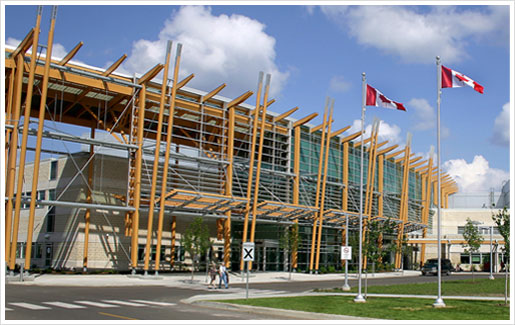
The FUS team within the TBRHRI Imaging Guided Interventions program is working with industry and government funders to take their innovation to patients everywhere. Thunder Bay is one of only three Philips Healthcare high intensity focused ultrasound (HIFU) sites in Canada, and is a valued member of the Philips’ HIFU research users’ community, advancing their software system for sites around the world.
The Research Institute has two locations—one for preclinical research and one for translational study. Thunder Bay is the largest city (about 100,000) in a sparsely populated region in Northwestern Ontario, and is located on Lake Superior less than an hour from the US border with Minnesota.
Collaboration with Philips Healthcare
The Philips’ HIFU research users’ community further develops Sonalleve software in the areas of image reconstruction and clinical interface engineering. Members develop new tools and techniques for treatment planning and monitoring. Of particular consideration is the creation of novel models for different indications and/or running simulations.
“It’s really a very nice network for all of the users of these tools. Clinical scientists from Philips have disseminated the tools to other sites (from the USA to China), and Philips Research in Eindhoven has used this software to accelerate their work,” says Samuel Pichardo, PhD, Research Scientist at TBRHRI. “Other scientists have requested access to the tools, and we are hoping to expand the platform and offer more support. I’m very proud of our relationship with Philips, it’s trusted.”
What makes the Thunder Bay research group so fruitful according to Dr. Lizette Warner, Clinical Science Manager for Philips North America, “is their willingness to collaborate, within their institution, between institutions, across borders, and with Philips to advance the field of MR guided HIFU.”
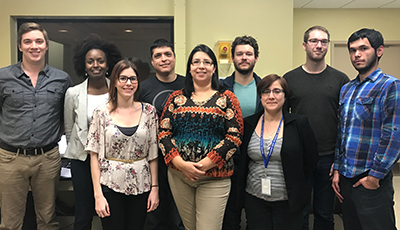
Furthermore, clinical and basic scientists integrate into the Health Science Centre’s clinical teams to foster a vibrant academic environment. They believe that treating patients at the earliest stages of disease creates improved health outcomes at significant cost-savings.
We conducted a Q & A session with three of the Institute’s twelve principal scientists to learn more about this hidden gem:
Q. When was TBRHRI started, who started it, and why?
The center was incorporated in December 2007 with the slogan “Bringing Discovery to Life.” It was created by the Thunder Bay Regional Health Sciences Centre to integrate scientists into the clinical setting and promote an academic, teaching, and innovative healthcare environment. In nine short years, it has already gained national and international recognition. It has helped the Regional Health Sciences Centre to become one of Canada’s Top 40 Research Hospitals.
Q. What types of facilities, space, and equipment do you have?
Two different locations house preclinical and translational research groups. The focused ultrasound researchers (in the Imaging Guided Interventions program) are mainly located in the translational research area. It includes a 3T- scanner, a Sonalleve system, and a fully equipped ultrasound wet lab. Take a virtual tour of their Philips Achieva 3T MRI and Sonalleve suite and all of the research areas.
Q. What is the Research Institute’s Mission?
TBRHRI’s mission is to improve the quality of healthcare through excellence in patient-centered research. Their vision is to pioneer a new standard of excellence in the clinical investigation of novel molecular imaging-based diagnostic technologies for disease prevention, early detection, and image-guided treatment. Scientists and clinicians work together with academic and industry partners to develop new tools. Their key research themes are:
- Advanced Detection Devices
- Imaging Guided Interventions
- Probe Development and Biomarker Exploration
Q. Describe your funding sources and annual budget?
Since its founding, TBRHRI has secured more than $50 million in funding from government and industry partners. Grants have come from the Natural Sciences and Engineering Research Council of Canada (NSERC), and the Province of Ontario, which offers specialized innovation research project grants. They have also received federal funds from an economic development program specifically targeted for the northern part of Canada.
Q. Who are your main investigators for focused ultrasound? What are their professional history/credentials?
Focused ultrasound research falls under the Imaging Guided Interventions program. Laura Curiel, PhD, Samuel Pichardo, PhD, and Naana Jumah, MD, PhD, are the principal investigators for focused ultrasound research.
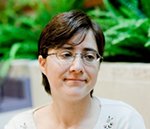 Laura Curiel, PhD, Scientist
Laura Curiel, PhD, Scientist
With a background in electronics, biomedical engineering, and imaging systems, Dr. Curiel is interested in device design, ultrasound lesion formation, and treatment monitoring. She is collaborating with Philips Healthcare and Sunnybrook Health Sciences Centre to improve treatment for uterine fibroids. She is also studying new bioeffects and monitoring tools to achieve safer and more effective treatments. Dr. Curiel has experience designing and testing new HIFU probes for prostate cancer, using modeling to improve clinical outcomes, and evaluating elastographic imaging techniques.
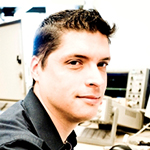 Samuel Pichardo, PhD, Scientist
Samuel Pichardo, PhD, Scientist
Dr. Pichardo earned his PhD in Imaging Systems in Lyon, France after completing undergraduate studies in electronics. He is also an Adjunct Professor of Electrical Engineering at Lakehead University. Dr. Pichardo studies sound propagation through the human skull, software platforms to accelerate development of MRI-guided HIFU, new methods to drive ultrasound transducers, hyperthermia treatments, and applications of HIFU for pediatrics (in collaboration with The Hospital for Sick Children at Toronto).
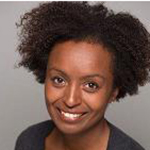 Naana Jumah, BASc, MD, DPhil, FRCSC
Naana Jumah, BASc, MD, DPhil, FRCSC
Clinician Research, TBRHRC
OB/GYN, TBRHSC
Assistant Professor, Northern Ontario School of Medicine
Trained at the University of Toronto, Oxford University, and Harvard University, Dr. Jumah combines her academic background in medicine and engineering to focus her research on Aboriginal women’s health, substance use during pregnancy, cervical cancer screening, and the treatment of uterine fibroids. She is working to advance TBRHRI’s focused ultrasound uterine fibroid treatment program and is leading and designing clinical trials in this area.
Q. How many total staff do you have in each position?
In addition to our three principle investigators, we currently have three PhD students, two master’s degree students, 12-14 undergraduates, and two research coordinators. In Canada, students spend time gaining professional experience for 4 to 8 months, so we are fortunate to have Lakehead University located nearby. High school students also assist with projects at times. We are happy with this role that we play in educating future scientists.
Q. Who are your internal and external collaborators? Who else at [site] do you work with?
Besides our association with Thunder Bay Regional Health Sciences Centre, end users of the tools developed at TBRHRI include Vanderbilt University, Sunnybrook Health Sciences Centre, University of Texas Southwestern, Johns Hopkins University, University of Washington at St. Louis, Guangdong General Hospital, and more. We have a very strong and successful collaboration with The Hospital for Sick Children (SickKids) and with Sunnybrook Research Institute on multiple projects. For other projects, we work with Cancer Care Ontario, Lakehead University, Northern Ontario School of Medicine, and Confederation College.
Projects
Q. Which FUS applications and biomechanisms are being investigated?
We study cavitation, sound propagation in heterogeneous media, thermal effects, and non-linear effects. As mentioned above, we are also interested in HIFU materials science and electronics. Dr. Pichardo has been involved in developing the driving systems needed to turn Sonalleve into a research platform.
Q. How many different studies are being conducted at this site? What are your projects?
- Within Thunder Bay, we work with multi-disciplinary groups to study the human papilloma virus (HPV) that causes genital warts and cervical cancer. We are carrying out ultrasound-mediated in vitro molecule delivery for immunotherapy studies and will soon begin animal trials in this area.
- In collaboration with The Hospital for Sick Children in Toronto (SickKids), we are participating in studies for patients with neuroblastoma, neurological disorders in young patients, and other pediatric diseases.
- With Sunnybrook Health Sciences Centre, we are modifying the platform to accelerate clinical translation for the validation of hyperthermia with MRI-HIFU combined with radio-chemo treatment for recurrent, non-resectable rectal tumors and aide in their Head and Neck study.
- We are working to develop new driving technology that will improve the efficiency of HIFU transducers. Our new “biphasic” driving method employs very basic physics theories.
- We performed economic validation studies that proved the value for treating uterine fibroids with focused ultrasound.
Q. What are your successes?
Our successes are the many multi-disciplinary projects between our team and biochemistry, materials sciences, cell biology, and the clinicians. With radiation oncologists at Sunnybrook, our team is demonstrating that hyperthermia based on MRI-HIFU can finally become a reality. Our collaboration with neurosurgeons, interventional radiologists, and oncologic surgeons at SickKids is helping to bring HIFU into the pediatrics world. The software tools we developed helped us establish an outstanding collaboration network that greatly mitigates the relative isolation of our centre. We are very proud of the highly-diversified range of applications being explored with them and it is proof that a sharing model is incredibly beneficial for our community and ultimately the patients.
Q. What is the role of the Foundation in your work?
The Foundation helped us fund a summer intern in the Global Internship Program. Because we are isolated geographically, it was challenging to recruit interns, and the program is great. We are hoping to apply for funding for a small clinical trial to achieve individualized online focusing during treatments that we have planned to conduct here at Thunder Bay. Finally, we hope that the Foundation will help us promote our open access tools to open the clinical Sonalleve platform for research use by any user.
Q. What is your wish list to increase your impact?
- We would like to treat more patients and conduct clinical trials.
- It would be nice to have some kind of organized structure or roadmap for small centers to follow to conduct HIFU clinical trials.
- The Foundation could offer accreditation for HIFU physicians to certify clinical competency and review clinical trial protocols.
- We would like to take our tools to the next level–go beyond them to offer complete solutions.
Q. What is next?
Taking our software platform to construct full solutions for HIFU is very close to a reality, and we want to make HIFU accessible to any user.
Past Coverage of Site
December 2015 Newsletter – JTU Article of the Month. Researchers at Thunder Bay designed and tested a new device to evaluate varying parameters for accessing cervical cancer cells using sonoporation, a mechanism of focused ultrasound that can mechanically open cellular membranes. Sonoporation may be an effective way to deliver targeted drugs or genes into cancer cells.
Most Recent Focused Ultrasound Publications
Christoffersen C, Wong W, Pichardo S, Togtema G, Curiel L. Class-DE Ultrasound Transducer Driver for HIFU Therapy.IEEE transactions on biomedical circuits and systems 2016 Apr;10(2):375-82.
Pichardo S, Silva RR, Rubel O, Curiel L. Efficient Driving of Piezoelectric Transducers Using a Biaxial Driving Technique. PloS one 2015;10(9):e0139178.
Kivinen J, Togtema M, Mulzer G, Choi J, Zehbe I, Curiel L, et al. Sonoporation efficacy on SiHa cells in vitro at raised bath temperatures-experimental validation of a prototype sonoporation device.J Ther Ultrasound 2015;3:19.
Rieck B, Bates D, Zhang K, Escott N, Mougenot C, Pichardo S, et al. Focused ultrasound treatment of abscesses induced by methicillin resistant Staphylococcus aureus: feasibility study in a mouse model. Medical physics 2014 Jun;41(6):063301.
Phenix CP, Togtema M, Pichardo S, Zehbe I, Curiel L. High intensity focused ultrasound technology, its scope and applications in therapy and drug delivery.Journal of pharmacy & pharmaceutical sciences : a publication of the Canadian Society for Pharmaceutical Sciences, Societe canadienne des sciences pharmaceutiques 2014;17(1):136-53.
Pichardo S, Togtema M, Jackson R, Zehbe I, Curiel L. Influence of cell line and cell cycle phase on sonoporation transfection efficiency in cervical carcinoma cells under the same physical conditions.IEEE transactions on ultrasonics, ferroelectrics, and frequency control 2013 Feb;60(2):432-5.
Zaporzan B, Waspe AC, Looi T, Mougenot C, Partanen A, Pichardo S. MatMRI and MatHIFU: software toolboxes for real-time monitoring and control of MR-guided HIFU.J Ther Ultrasound 2013;1(1):7.
